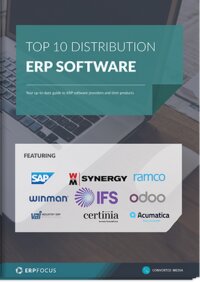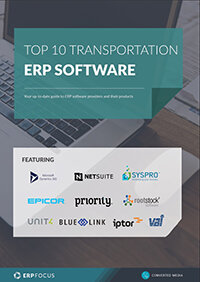Distribution ERP vs WMS: which suits your needs better?
A distribution ERP provides your business with a comprehensive set of tools to manage your entire enterprise. Accounting, sales orders, inventory management, purchase orders, and all parts of your business are linked by common databases and transactions.
Warehouse management systems (WMS) have a more limited scope. They manage your stores inventory and help keep that inventory in optimal locations at all times.
Your choice is not necessarily an either / or one. Many distribution ERP systems include WMS modules as an option. Standalone WMS often can be integrated with your ERP too. Yet companies and project managers are often confused as to which one they need.
Below we highlight what WMS adds to distribution ERP to help you make your decision
WMS adds power to ERP
Your ERP has the accounting value of your inventory and can back that up with a list of items in inventory and the value of each one. WMS looks at the same inventory items as ERP, but can also suggest the best location to shelf the PO receipt that just arrived.
WMS will look at near-term demands, where existing inventory is shelved, eliminate shelf locations that cannot fit the new items, and signal your stock people where this receipt should be. ERP can only say where the existing inventory is shelved.
WMS keeps your stock locations optimized
WMS will continually look at sales demands for all your items and suggest those with immediate requirements be moved to a location near your shipping areas. You can limit those moves to only where the destination shelf is empty.
You can also use WMS to move items with no immediate demand to a back shelf so the valuable near shelves get all the action. WMS supports cross docking where a PO receipt with an immediate sales demand is never shelved but immediately moved to the shipping dock even when there is some of the same SKU on hand.
WMS is flexible
Maybe you want to raise the priority to fulfill orders for a particular customer. The change in WMS is easy and quick and can be reversed tomorrow is needed. You might have a SKU that is an alternate to another. WMS can track when the alternate SKU is nearing its shelf life and automatically switch order demands to pull the alternate for orders keeping your inventory fresh and avoiding any loss of inventory value.
Which one suits you needs better up to you to decide. WMS can add tremendous value to any ERP but it does have a cost. Yet get your requirements right and spend your money wisely, and WMS can provide a good return on that investment for you.
Free white paper

7 steps to selecting distribution ERP
Get expert advice on distribution ERP selection and requirements analysis

Featured white papers
-

Top 10 Distribution Software Comparison
Compare the best distribution ERP systems available today
Download -

Top 10 Transportation ERP Software Comparison
Get your free comparison of the top 10 transportation ERPs
Download -

7 steps to selecting distribution ERP
Get expert advice on distribution ERP selection and requirements analysis
Download
Related articles
-

ERP for Food Distributors: Key Functionality
In a modern world where products are tailored to consumers, why should ERP for food distributors ...
-

CMMC Compliance: What Aerospace and Defense Manufacturers Need to Know
Key insights on CMMC compliance, deadlines, and securing DoD contracts with CMMC 2.0 certificatio...
-

ERP & Logistics: Optimizing the Supply Chain
Read about the steps you can take to optimize your supply chain through ERP software logistics ma...

